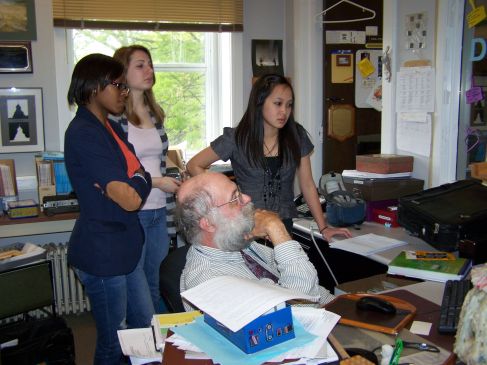Influenced by technology learning tool visionaries such as Jane Hart and Michele Pacansky-Brock and by practitioners such as Susan Manning and Kevin Johnson, Steve Johnson, and Irma Milevičiūtė I have been focusing my attention this year on the viability of a new course that would incorporate such learning tools. How, though, does one decide which to use among the plethora of tools available and among the increasing number appearing? In my search to answer this question I initially drew upon three primary resources. Susan Manning and Kevin E. Johnson, in their valuable book The Technology Toolbelt for Teaching, suggest that among the things entering into one’s decision should be thinking through 1) what problems would be solved by using the tool, 2) the cost of the tool, 3) the “platform” which will be used, 4) the level of expertise needed for the user, 5) issues of accessibility for special needs students, 6) technical requirements, and 7) the reliability of the tool.
Steve Johnson’s Digital Tools for Teaching provided me a useful starting point for examining 30 e-tools (grouped according to appropriateness for the novice, the developing user, or the advanced user) for creating, collaborating, and publishing. Michelle Pacansky-Brock, in her superb book Best Practices for Teaching with Emerging Technologies organizes her recommended “toolkit” in terms of those which are essential, those which enhance or facilitate communication and content creation, and those tools useful for back-channeling and developing participatory learning.
For the past six years I have been intermittently exploring the Top 100 Learning Tools championed by Jane Hart. At the end of last year I experienced a fortuitous opportunity to focus on the usefulness of the tools. On April 26, 2012, a call for proposals was made university-wide to use technology to develop course materials and travel plans for Carroll Cross-cultural Experiences (CCE’s). On April 27, my six-member student-research team composed of Phoumany Phouybanhdyt, Ryan Waters, Catrina Duncan, Amy Peterson, Elizabeth Firkus, and Maxine Venturelli emailed me that they enthusiastically and unanimously wanted to rise to the challenge of creating such a course. In October of this year they were successful in being awarded the opportunity.
As my students and I have worked together on this particular project the following tools have proven most useful (and therefore “top tools”) to me. Lucid explanations for each of these tools can be found in Jane Hart’s pithy yet information-laden “Quick Guides.”
1) Twitter: I have become much more Twitter-literate having a good sense of whom I want to follow.
2) Wikispaces: Served as a first sandbox repository for collaboration for my student research team.
3) Ning: Though it is expensive, the return on my investment is having a controlled, (for now) FaceBook-like private environment which allows seamlessintegration of chat, videos, blogging, and other tools.
4) Google Docs: A place and means where my students can share with each other the results of their research efforts. They actually taught me its utility!
5) WordPress: My preferred platform for blogging (after evaluating six). I have been able to reach out via FaceBook and Linked-In WordPress connections to alumni, present and former students, new International friends, and trustees who shared an interest in our project.
6) Skype: One of several Voice Communication tools we have experimented with.
7) Ipad Apps: A plethora which I shall explore more fully in another post. Since each of my students was awarded an Ipad for this project, we have concentrated especially on making sure the tools we use have a “mobile” technology application.
8) Various Browsers: Safari, Chrome, and Firefox in particular. It was enlightening and frustrating to discover that not all apps or tools are equally friendly across all browsers. This was especially the case with Screen-casting software.
9) Epals and Edmodo: Though I ultimately found both too restrictive for my uses for this particular project, through them I became much more aware of the exciting and extensive uses of these tools by K-12 students—and I formed an especially enriched international friendship.
10. Diigo (especially for educators): I am daily informed of resources which have proven to be invaluable for this project.
Later this week my students will share a preliminary report of their research and I’ll learn which tools they found of most value for course creation and course participation.
In the near future I’ll post the 10 learning tools I definitely am going to invest considerable time into this summer if this project continues or if I am encouraged to continue my efforts.

